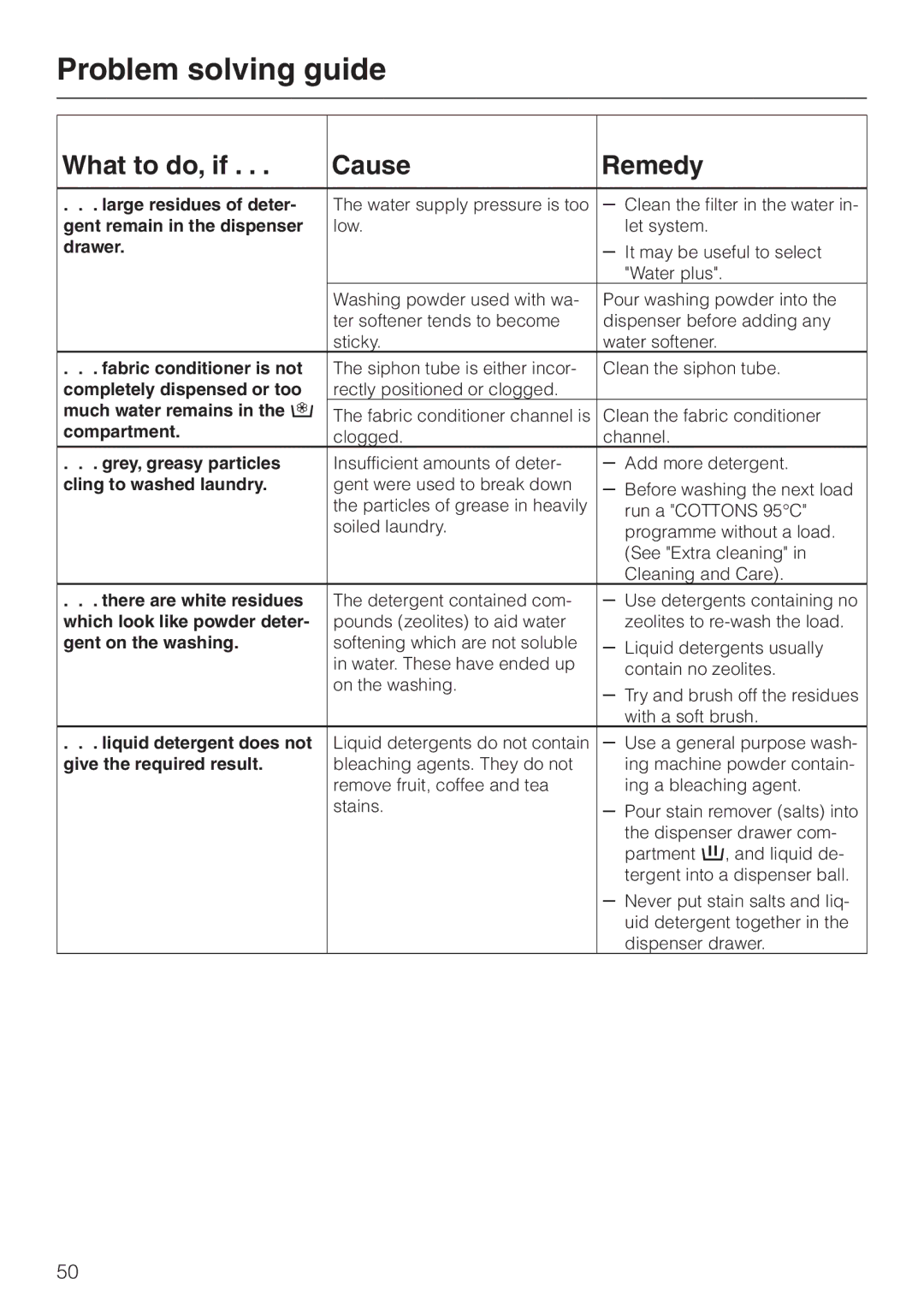Problem solving guide
What to do, if . . . | Cause | Remedy |
|
|
|
. . . large residues of deter- | The water supply pressure is too | – Clean the filter in the water in- |
gent remain in the dispenser | low. | let system. |
drawer. |
| – It may be useful to select |
|
| "Water plus". |
| Washing powder used with wa- | Pour washing powder into the |
| ter softener tends to become | dispenser before adding any |
| sticky. | water softener. |
. . . fabric conditioner is not | The siphon tube is either incor- | Clean the siphon tube. |
completely dispensed or too | rectly positioned or clogged. |
|
much water remains in the p | The fabric conditioner channel is | Clean the fabric conditioner |
compartment. | clogged. | channel. |
. . . grey, greasy particles | Insufficient amounts of deter- | – Add more detergent. |
cling to washed laundry. | gent were used to break down | – Before washing the next load |
| the particles of grease in heavily | run a "COTTONS 95°C" |
| soiled laundry. | |
| programme without a load. | |
|
| |
|
| (See "Extra cleaning" in |
|
| Cleaning and Care). |
. . . there are white residues | The detergent contained com- | – Use detergents containing no |
which look like powder deter- | pounds (zeolites) to aid water | zeolites to |
gent on the washing. | softening which are not soluble | – Liquid detergents usually |
| in water. These have ended up | contain no zeolites. |
| on the washing. | |
| – Try and brush off the residues | |
|
| |
|
| with a soft brush. |
. . . liquid detergent does not | Liquid detergents do not contain | – Use a general purpose wash- |
give the required result. | bleaching agents. They do not | ing machine powder contain- |
| remove fruit, coffee and tea | ing a bleaching agent. |
| stains. | – Pour stain remover (salts) into |
|
| the dispenser drawer com- |
|
| partment j, and liquid de- |
|
| tergent into a dispenser ball. |
|
| – Never put stain salts and liq- |
|
| uid detergent together in the |
|
| dispenser drawer. |
50
